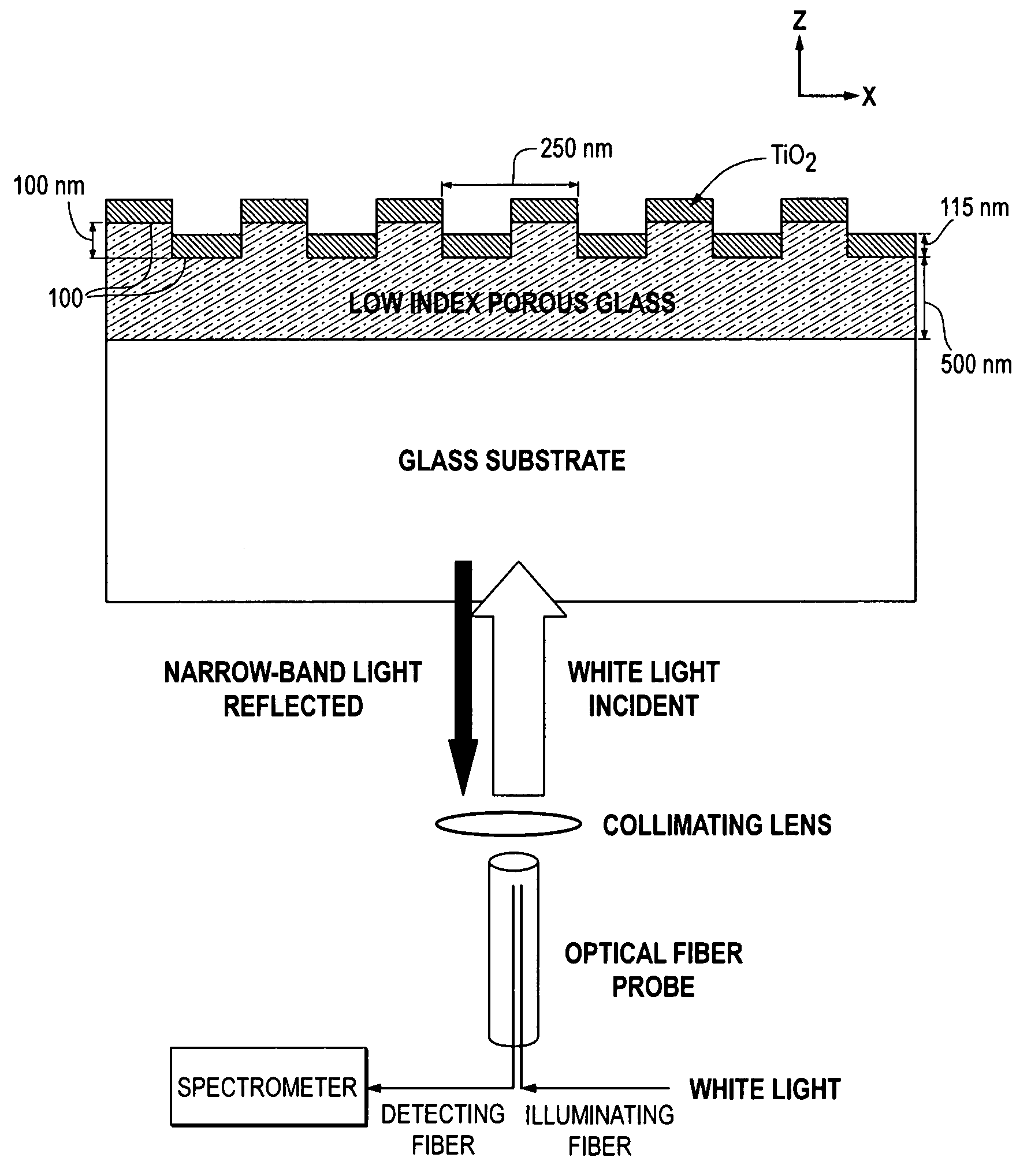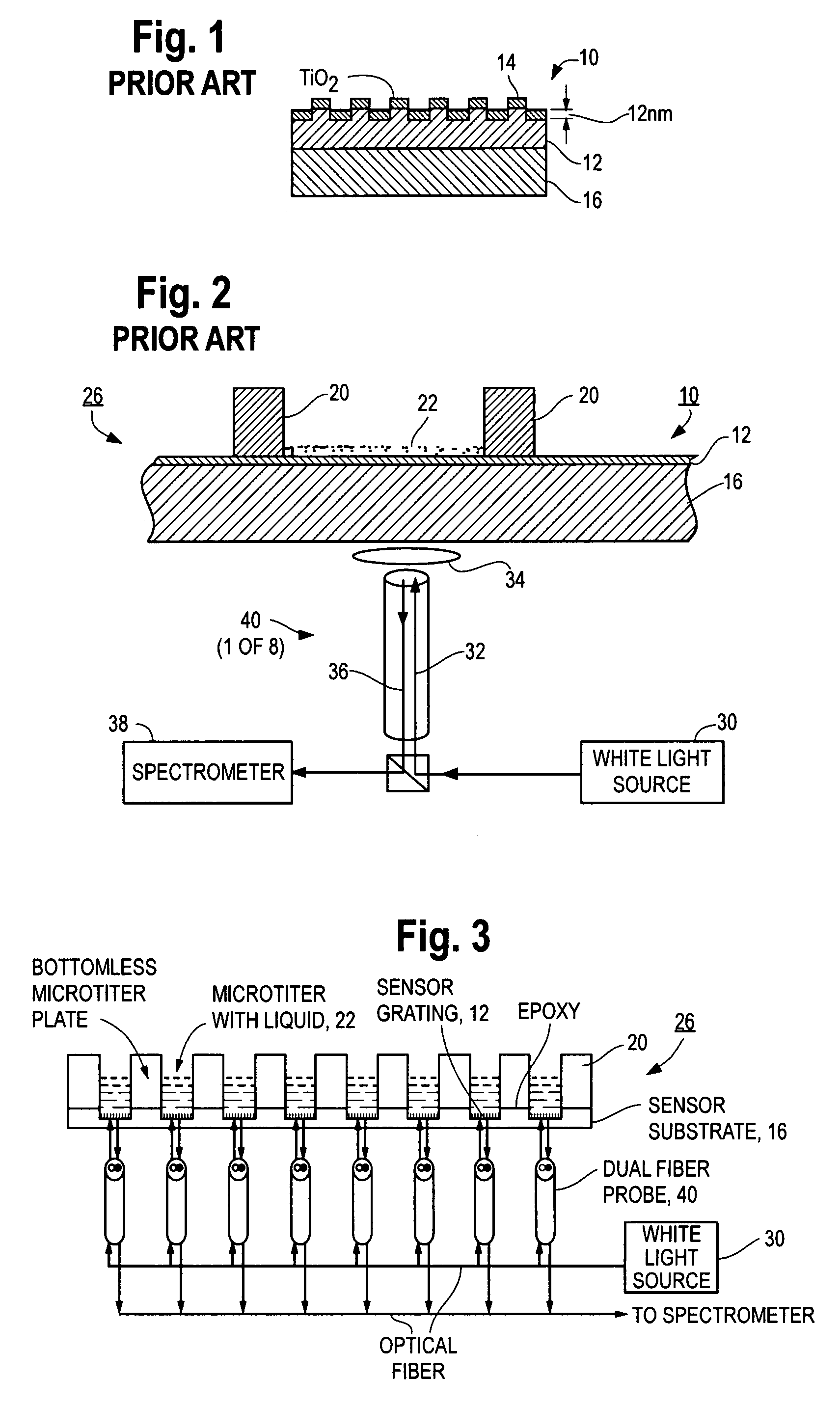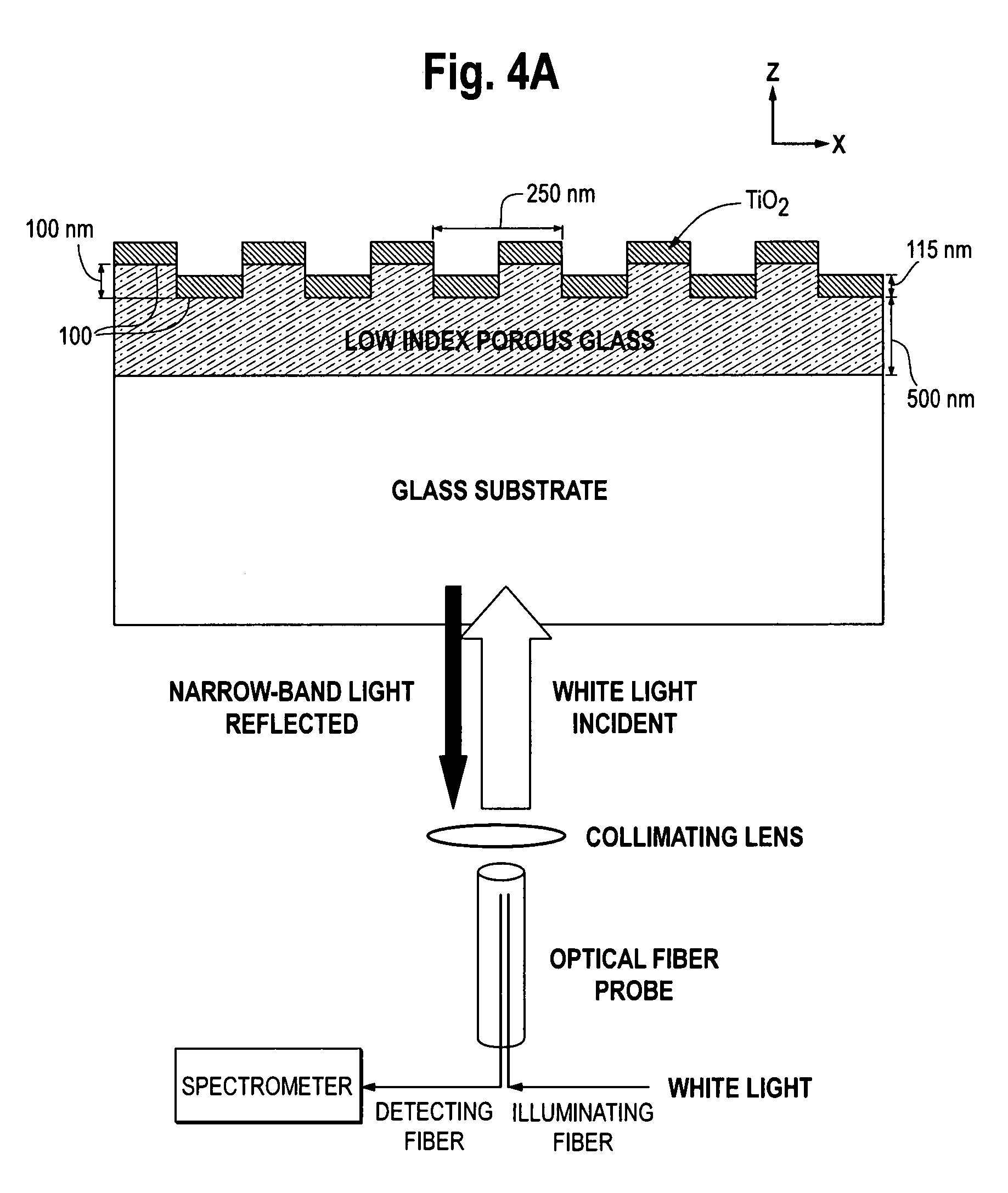Near ultraviolet-wavelength photonic-crystal biosensor with enhanced surface to bulk sensitivity ratio
a biosensor and ultraviolet-wavelength photonic crystal technology, applied in the field of grating-based biochemical sensor devices, can solve the problems of limiting the sensitivity of ri variations of bulk media, and achieve the effect of improving detection resolution
- Summary
- Abstract
- Description
- Claims
- Application Information
AI Technical Summary
Benefits of technology
Problems solved by technology
Method used
Image
Examples
Embodiment Construction
[0034]Biosensors are descried below which are based on one- or two-dimensional photonic-crystals operating at near-ultraviolet wavelengths. Rigorous Coupled-Wave Analysis simulations of the biosensors predict a more tightly confined resonant electric field at the surface of this biosensor as compared to previously fabricated near-infrared photonic-crystal biosensors. This change in the resonant electric field provides an improvement of over 4.5 times in the surface-sensitivity to bulk-sensitivity ratio, and therefore enables enhanced detection resolution for biomolecules adsorbed on the biosensor surface. These new biosensors fabricated by replica molding will be especially important for applications requiring the detection of small molecules or ultra-low analyte concentrations.
[0035]There is a growing interest in biomolecular detection platforms for drug discovery, environmental detection, medical diagnostics and life science research. See the Myszka et al. and Malqvist et al. arti...
PUM
 Login to View More
Login to View More Abstract
Description
Claims
Application Information
 Login to View More
Login to View More - R&D
- Intellectual Property
- Life Sciences
- Materials
- Tech Scout
- Unparalleled Data Quality
- Higher Quality Content
- 60% Fewer Hallucinations
Browse by: Latest US Patents, China's latest patents, Technical Efficacy Thesaurus, Application Domain, Technology Topic, Popular Technical Reports.
© 2025 PatSnap. All rights reserved.Legal|Privacy policy|Modern Slavery Act Transparency Statement|Sitemap|About US| Contact US: help@patsnap.com



